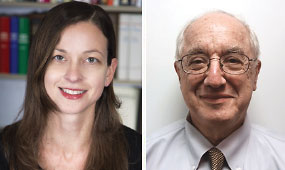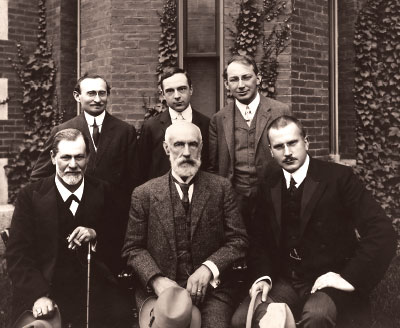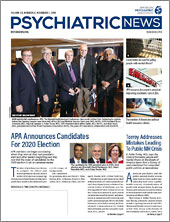The development and current state of psychoanalysis in North America is a story of how the field has evolved and transformed to become, perhaps surprisingly, a better fit for contemporary psychiatry and medicine than it was when Freud first created it. There has been much discussion of the waning influence of psychoanalysis on psychiatry from its heyday in the 1950s and 1960s; less acknowledged is its lasting impact on general outpatient psychiatric practice, as well as its presence at the core of the narrative medicine movement and the growing interest across all medical disciplines in doctor-patient relationships.
Psychoanalytic psychotherapy began in the late 19th century with the work of Josef Breuer and Sigmund Freud. Early Freudian treatment aimed at curing specific symptoms lasted for one year or less and focused on the reconstruction of early traumatic memories that were presumed to be etiologic rather than on the exploration of transference and resistance. It was about 100 years ago that we find the beginning of what we would today call psychoanalysis, a multiyear treatment that is open ended, not symptom focused, and follows the patient’s associations wherever they might lead, with the assumption that this will promote an understanding of unconscious processes that are the foundation of character and of psychopathology.
Until Freud’s death, psychoanalytic history was fairly linear, essentially paralleling Freud’s personal views. Those who had important differences from his thinking were extruded from the psychoanalytic community. However, after Freud’s death, and catalyzed by the simultaneous diaspora of Eastern European analysts, there was no longer a single psychoanalytic theory. Each group around the world felt that it was basing its ideas on Freud, but moving beyond his thinking and in a multitude of directions.
The European analysts who immigrated to the United States became the leaders of North American psychoanalysis and its “ego psychology.” Freud had given A. A. Brill his translation rights and had famously visited the United States in 1909 at the invitation of psychologist Stanley Hall. Freud gave a series of lectures at Clark University that served to introduce his ideas and to win powerful American advocates for psychoanalysis, such as Harvard’s James Jackson Putnam.
Later, psychoanalysis became a core aspect of military medicine as it treated traumatized veterans in World War I and especially World War II, where its apparent efficacy further consolidated its prominence in American psychiatry. Furthermore, European analysts fleeing the war joined American psychoanalysts in promoting the integration of psychoanalysis into the mainstream of academic medicine, something in which Freud had not been interested, in part to solidify their professional status. The ego psychological model was to dominate in the United States until the 1980s, a model rooted in a belief in the empirical method, organized around the so-called “structural theory” and invested in affiliating with science and with academic psychiatry.
Psychoanalysis Became Prime
By the 1950s, many of the major American psychiatry department chairs were occupied by psychoanalysts. Psychiatric departments for a time depended upon psychoanalytic theories and treatments of psychosomatic illnesses to, in effect, remedicalize psychiatry, the same role later played by pharmacotherapy in the 1960s and 1970s. The inevitable disappointment in the overpromise of psychoanalysis eventually ended its rapid, early growth, and psychoanalysts’ influence in psychiatry then diminished with the rise of social psychiatry and psychopharmacology, the diminution of interest in psychosomatics, and the growing recognition that psychoanalysis had little to offer the major public health problem of people with severe and chronic mental illness.
The importance to psychoanalysis of its relationship with psychiatry had the unfortunate effect of reinforcing organized American psychoanalysis’s opposition to psychologists, the one issue on which they were strongly opposed to Freud. In 1954 the medical analysts of APA, the AMA, and the American Psychoanalytic Association (APsaA) published a joint statement stating that psychotherapy is a medical procedure and must be carried out by or under the supervision of a physician. Nonmedical analysts in response began to form important dissident groups. These psychologist psychoanalysts had little interest in affiliating with academic medicine and were influenced more by social activism and cultural concerns. As APsaA continued to insist on medicalization of psychoanalysis, nonmedical psychoanalysis began to flourish in a parallel world. This continued until a lawsuit brought by psychologists was settled in 1988, with APsaA agreeing to end its ban on nonphysicians.
Therapeutic Diversity Becomes Norm
North American psychoanalysis now encompasses a diversity of views. In addition to ego psychology, we have Heinz Kohut and self-psychology and relational and interpersonal views, which are popular in the United States (particularly among nonmedical groups). Outside this country, we have Melanie Klein and her followers (the dominant school in England and the international community), Lacanian (immensely influential in France and Southern Europe), object relations models (British middle school and Kernberg in the United States), with somewhat less organized followers of Winnicott, Bion, Fairbairn, and Schafer.
This diversity raises a fundamental question of what these multiple schools really mean. The original indications for psychoanalysis broadened to embrace patients with psychosomatic problems, serious personality problems (including what came to be called narcissistic and borderline personality), posttraumatic syndromes, and a variety of problems of relationships. The shift from symptoms and the memories they were believed to represent to character, transference, and resistance means that the treatment is conducted in the emotionally charged atmosphere of the here and now within the consultation room rather than in discussions of events outside of the room and in the past.
Freud was searching for a scientific theory that would someday be proven to be “true” to explain mental life and that could be applied in the treatment of patients. Today many have reversed that view—they see Freud’s most important contribution to be the development of the clinical method, the psychoanalytic situation—free association and the exploration of transference and resistance in the context of a trusted relationship rather than the formulation of a theory. The goal is not to obtain data that have scientific validity that might confirm the theory, but rather to practice a method that has clinical value.
While Freud looked to the primitive brain science of his era as the source of theoretical models, today we are more likely to turn to developmental psychology and the study of relationships, language, and communication. Contemporary psychoanalysis is therefore well positioned as a prime explorer of the doctor-patient relationship that is being reconsidered as central throughout medicine and, therefore, an important basic discipline for the psychiatric profession. ■
The joint statement titled “Resolution on Relations of Medicine and Psychology” is posted in the American Journal of Psychiatry
here.



